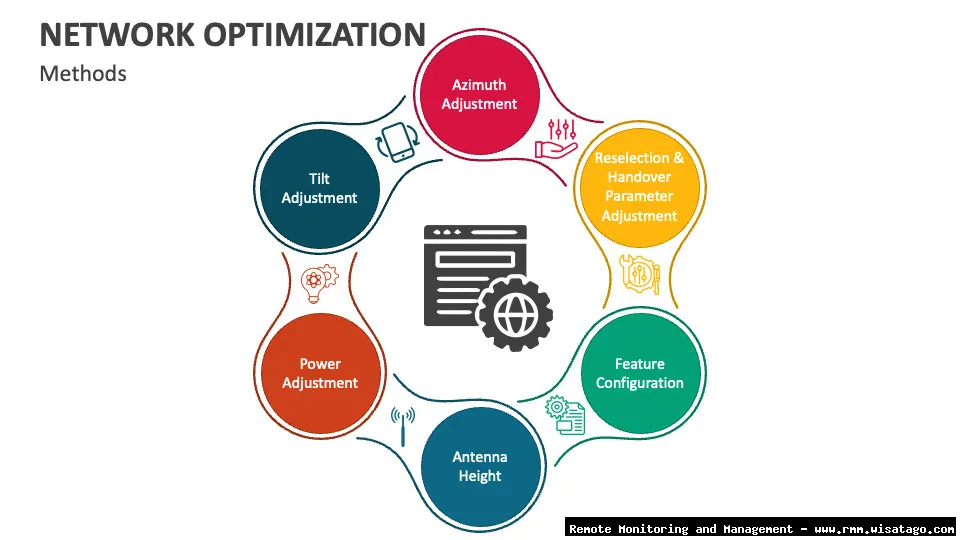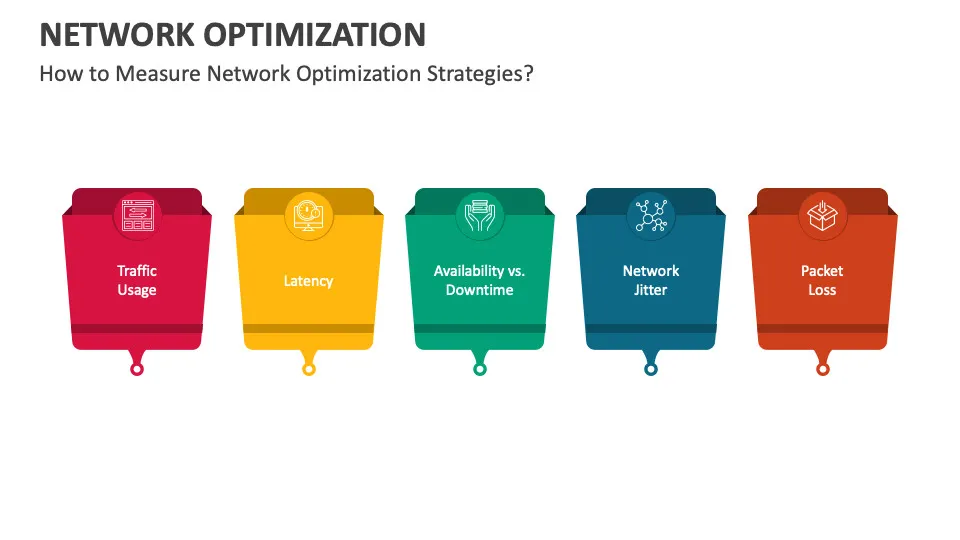In today’s hyper-connected world, network performance is no longer just an IT concern; it’s a business imperative. Slow networks translate directly to lost productivity, frustrated customers, and ultimately, a hit to the bottom line. As IT professionals, we’re constantly battling bottlenecks, bandwidth issues, and a host of other gremlins that can cripple network speed and stability. But what if you had a crystal ball, a way to proactively identify and address these problems before they impact your users? That’s where Remote Monitoring and Management (RMM) analytics comes in, offering a powerful solution to optimize your network and keep your business running smoothly.
RMM tools aren’t new, of course. We’ve been using them for years to remotely manage endpoints, patch systems, and troubleshoot issues. However, the real game-changer is the advanced analytics layer that many modern RMM platforms now offer. This isn’t just about reactive troubleshooting; it’s about proactive optimization. By collecting and analyzing vast amounts of network data, RMM analytics can provide invaluable insights into network performance, identify potential problems, and even suggest solutions. It transforms your network management from a reactive fire drill into a strategic, data-driven process.

This article will delve into the world of network performance optimization with RMM analytics. We’ll explore the key features and benefits of these tools, discuss real-world use cases, and highlight the challenges you might face during implementation. Whether you’re already using an RMM platform or considering investing in one, this guide will provide you with a comprehensive understanding of how to leverage RMM analytics to achieve optimal network performance and drive business success. Let’s get started!
Understanding RMM Analytics for Network Performance
At its core, RMM analytics for network performance is about using data to make better decisions. It involves collecting network data from various sources, analyzing that data to identify trends and anomalies, and then using those insights to optimize network performance. This process can be broken down into several key components:
Data Collection
RMM tools collect data from a wide range of network devices and applications, including:
- Routers and Switches: Monitoring traffic flow, bandwidth utilization, and device health.
- Servers: Tracking CPU usage, memory utilization, disk I/O, and network latency.
- Workstations and Laptops: Monitoring application performance, network connectivity, and user experience.
- Network Applications: Analyzing the performance of critical applications, such as email servers, databases, and web servers.
- Firewalls: Monitoring security events, intrusion attempts, and network traffic patterns.
This data is typically collected through agents installed on endpoints or through network protocols like SNMP and WMI.
Data Analysis
Once the data is collected, it’s analyzed to identify patterns, anomalies, and potential problems. This analysis often involves:
- Trend Analysis: Identifying long-term trends in network performance, such as increasing bandwidth utilization or decreasing application response times.
- Anomaly Detection: Identifying unusual spikes or dips in network activity that could indicate a problem.
- Root Cause Analysis: Determining the underlying cause of network performance issues.
- Predictive Analytics: Using historical data to predict future network performance and identify potential bottlenecks before they occur.
Modern RMM platforms often use machine learning algorithms to automate the data analysis process and provide more accurate and insightful results. For more information, you can refer to RMM as an additional resource.
Reporting and Visualization
The insights gained from data analysis are then presented in the form of reports and visualizations. These reports can provide a high-level overview of network performance or drill down into specific areas of concern. Common visualizations include:
- Dashboards: Providing a real-time view of key network performance metrics.
- Charts and Graphs: Visualizing trends and anomalies in network data.
- Heat Maps: Identifying areas of the network that are experiencing high levels of activity or congestion.
These reports and visualizations help IT professionals quickly understand the state of their network and identify areas that need attention.
Key Features of RMM Analytics for Network Optimization
Not all RMM solutions are created equal when it comes to analytics. Here are some key features to look for when evaluating RMM platforms for network performance optimization:
Real-time Monitoring and Alerting
Real-time monitoring is crucial for identifying and responding to network issues quickly. The RMM platform should provide real-time visibility into network performance metrics and generate alerts when thresholds are exceeded. These alerts should be customizable, allowing you to define specific thresholds for different devices and applications. Ideally, the system should also offer automated remediation actions, such as restarting a service or throttling bandwidth, to address common problems without manual intervention.

Bandwidth Monitoring and Analysis
Bandwidth is a critical resource, and it’s essential to monitor how it’s being used. The RMM platform should provide detailed bandwidth usage statistics, allowing you to identify bandwidth hogs and optimize bandwidth allocation. This includes the ability to monitor bandwidth usage by application, user, and device. Advanced features like traffic shaping and quality of service (QoS) can help prioritize critical traffic and ensure that important applications get the bandwidth they need.
Application Performance Monitoring (APM)
Network performance is only one piece of the puzzle. Application performance is equally important. The RMM platform should provide APM capabilities, allowing you to monitor the performance of critical applications and identify bottlenecks. This includes monitoring application response times, transaction rates, and error rates. APM can help you identify issues with application code, database performance, or server resources that are impacting user experience.
Network Mapping and Discovery
A clear understanding of your network topology is essential for effective network management. The RMM platform should provide network mapping and discovery capabilities, allowing you to automatically discover and map all devices on your network. This includes identifying device types, IP addresses, and network connections. A visual network map can help you quickly identify potential problems and understand the impact of network changes.
Customizable Reporting and Dashboards
Every organization has unique needs and requirements. The RMM platform should provide customizable reporting and dashboards, allowing you to tailor the information you see to your specific needs. This includes the ability to create custom reports, define custom metrics, and configure custom dashboards. Customizable reporting and dashboards ensure that you’re getting the information you need to make informed decisions.
Benefits of Using RMM Analytics for Network Optimization
Implementing RMM analytics for network optimization can bring numerous benefits to your organization:
Improved Network Performance
By proactively identifying and addressing network issues, RMM analytics can significantly improve network performance. This translates to faster application response times, reduced latency, and increased bandwidth availability. Ultimately, improved network performance leads to increased productivity and a better user experience.
Reduced Downtime
By detecting and preventing network problems before they cause downtime, RMM analytics can help you minimize disruptions to your business. This is especially important for organizations that rely heavily on their network for critical operations. Reduced downtime translates to increased revenue and reduced operational costs.
Enhanced Security
RMM analytics can also help improve network security by identifying suspicious activity and potential security threats. By monitoring network traffic patterns and security events, you can detect and respond to security incidents more quickly. This can help you protect your network from malware, intrusions, and other security threats.
Increased Efficiency
By automating many of the tasks associated with network management, RMM analytics can free up your IT staff to focus on more strategic initiatives. This includes automating tasks such as patching, software deployment, and configuration management. Increased efficiency translates to lower operational costs and improved IT productivity.
Data-Driven Decision Making
RMM analytics provides you with the data you need to make informed decisions about your network. This includes data on network performance, bandwidth utilization, application performance, and security events. By using data to guide your decisions, you can ensure that you’re making the best choices for your organization.

Challenges of Implementing RMM Analytics
While RMM analytics offers significant benefits, there are also some challenges to consider during implementation:
Data Overload
RMM tools can collect vast amounts of data, which can be overwhelming. It’s important to have a strategy for managing and analyzing this data effectively. This may involve using data filtering, aggregation, and visualization techniques to focus on the most important information. Choosing an RMM platform with robust data analysis and reporting capabilities is crucial.
Integration Complexity
Integrating RMM analytics with your existing IT infrastructure can be complex. You may need to integrate with other monitoring tools, security systems, and business applications. It’s important to plan your integration carefully and ensure that all systems are compatible. Consider using an RMM platform that offers open APIs and integrations with popular third-party tools.
Cost
RMM solutions can be expensive, especially those with advanced analytics capabilities. It’s important to carefully evaluate the costs and benefits of different RMM platforms before making a decision. Consider the total cost of ownership, including licensing fees, implementation costs, and ongoing maintenance costs. Also, evaluate the potential return on investment in terms of improved network performance, reduced downtime, and increased efficiency.
Training and Expertise
Using RMM analytics effectively requires specialized skills and expertise. Your IT staff may need training on how to use the RMM platform and interpret the data it provides. Consider providing training to your IT staff or hiring consultants with expertise in RMM analytics.
Real-World Use Cases
Let’s look at some real-world examples of how RMM analytics can be used to optimize network performance:
Identifying Bandwidth Hogs
A large organization was experiencing slow network performance during peak hours. Using RMM analytics, they were able to identify a few users who were consuming a significant amount of bandwidth by streaming video and downloading large files. By implementing bandwidth throttling policies, they were able to reduce bandwidth consumption and improve network performance for all users.
Troubleshooting Application Performance Issues
A company was experiencing slow response times for a critical business application. Using RMM analytics, they were able to identify a bottleneck in the database server. By optimizing the database queries and increasing the server’s memory, they were able to significantly improve application performance.
Preventing Network Outages
An organization was experiencing frequent network outages due to overloaded routers. Using RMM analytics, they were able to identify routers that were consistently running at high utilization levels. By upgrading these routers to models with higher capacity, they were able to prevent future outages.
Conclusion
Network performance optimization with RMM analytics is a powerful way to improve network performance, reduce downtime, enhance security, and increase efficiency. By collecting and analyzing network data, RMM analytics provides valuable insights that can help you make informed decisions and optimize your network. While there are some challenges associated with implementing RMM analytics, the benefits far outweigh the costs. By carefully planning your implementation and choosing the right RMM platform, you can unlock the full potential of RMM analytics and achieve optimal network performance for your organization. Remember to focus on the key features discussed, such as real-time monitoring, bandwidth analysis, and customizable reporting, to ensure you’re getting the most out of your RMM investment.

Conclusion
In conclusion, leveraging RMM analytics for network performance optimization is no longer a luxury, but a necessity for businesses striving for operational efficiency and competitive advantage. As we’ve explored, the proactive insights derived from RMM platforms empower IT professionals to identify bottlenecks, anticipate potential issues, and implement targeted solutions before they impact end-users. This proactive approach, driven by data-driven decision-making, ultimately leads to improved network stability, reduced downtime, and enhanced overall system performance.
The journey to optimized network performance begins with understanding your current infrastructure and embracing the analytical capabilities of your RMM solution. By actively monitoring key metrics, analyzing trends, and implementing recommended improvements, you can transform your network from a potential liability into a powerful asset. Ready to unlock the full potential of your network? We encourage you to explore the resources available from your RMM vendor or contact our team at www.example.com/contact to learn how we can help you harness the power of RMM analytics and achieve peak network performance.
Frequently Asked Questions (FAQ) about Network Performance Optimization with RMM Analytics
How can I use RMM analytics to proactively identify and resolve network bottlenecks before they impact end-user experience?
RMM (Remote Monitoring and Management) analytics provide valuable insights into your network performance, allowing you to proactively identify and address potential bottlenecks before they affect users. By monitoring key network metrics like latency, packet loss, bandwidth utilization, and CPU/memory usage on network devices, you can establish baseline performance levels. When deviations from these baselines occur, RMM analytics can trigger alerts, notifying you of potential issues. Analyzing historical data within the RMM platform helps pinpoint recurring problems, such as peak-hour bandwidth congestion or overloaded servers. For instance, if you notice consistently high latency during specific times, you can investigate the cause, whether it’s an overloaded internet connection, a misconfigured router, or an application consuming excessive bandwidth. Addressing these issues promptly minimizes disruptions and ensures a smooth user experience. Furthermore, RMM analytics can help you optimize network configurations and resource allocation for improved overall performance.
What specific network performance metrics should I be tracking with my RMM tool to ensure optimal network health and prevent downtime?
To ensure optimal network health and minimize downtime, tracking several key network performance metrics within your RMM tool is crucial. Latency, the delay in data transfer, is a primary indicator of network responsiveness. High latency can significantly impact applications and user experience. Packet loss, the percentage of data packets that fail to reach their destination, indicates network congestion or hardware issues. Bandwidth utilization shows how much of your available bandwidth is being used; consistently high utilization can signal the need for upgrades. Monitoring CPU and memory usage on network devices (routers, switches, servers) helps identify overloaded devices that may be causing performance bottlenecks. Network interface errors (e.g., collisions, CRC errors) point to physical layer problems that need immediate attention. Finally, tracking DNS resolution time helps identify issues with your DNS servers, which can cause slow website loading times. Regularly monitoring these metrics and setting up alerts for abnormal behavior allows for proactive intervention and prevents potential network disruptions.
How can RMM analytics help me justify the need for network upgrades, such as increased bandwidth or new hardware, to management?
RMM analytics provide concrete data that strengthens your case when requesting network upgrades. Instead of relying on anecdotal evidence, you can present management with quantifiable data demonstrating the need for increased bandwidth or new hardware. For example, historical bandwidth utilization reports from your RMM tool can show consistently high utilization rates, especially during peak hours, justifying the need for more bandwidth. Similarly, reports showing increasing latency and packet loss during specific times can indicate network congestion that can be resolved with better hardware. RMM can also demonstrate the impact of the current network limitations on business operations. For instance, you can show how slow application performance, caused by network bottlenecks, affects productivity and revenue. By presenting data-driven insights, you can clearly demonstrate the ROI of the proposed upgrade, showing how it will improve network performance, reduce downtime, and enhance overall business efficiency, thus making a compelling case for investment.